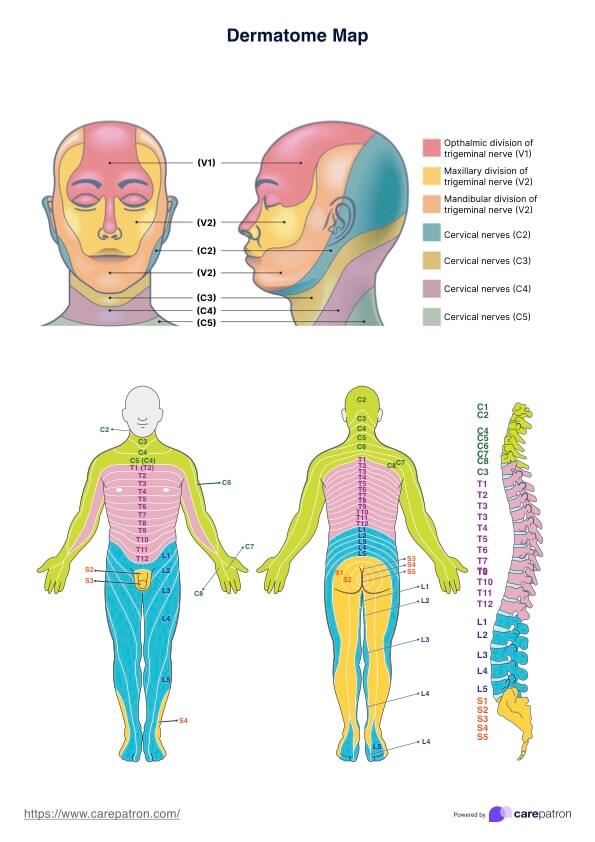Dermatomes reveal the sensory areas of the skin supplied by multiple spinal nerves. They help clinicians diagnose nerve damage, spinal cord injuries, and other neurological conditions by pinpointing which specific spinal nerve may be affected.

Dermatome Map
The Dermatome Map depicts nerve distribution across the body. Use our template to see our diagram of the dermatomes of the head, neck, and the rest of the body.
Dermatome Map Template
Commonly asked questions
Dermatome pain typically manifests as a sharp, tingling, or burning sensation in a specific skin region. This discomfort can be traced back to an issue with the corresponding spinal nerve, making it easier to diagnose nerve-related issues.
An effective way to remember dermatomes is by using mnemonics or visualizing the body's layout, starting from the head and moving down to the feet. Associating specific dermatomes with easily identifiable body landmarks also aids memory.
EHR and practice management software
Get started for free
*No credit card required
Free
$0/usd
Unlimited clients
Telehealth
1GB of storage
Client portal text
Automated billing and online payments











